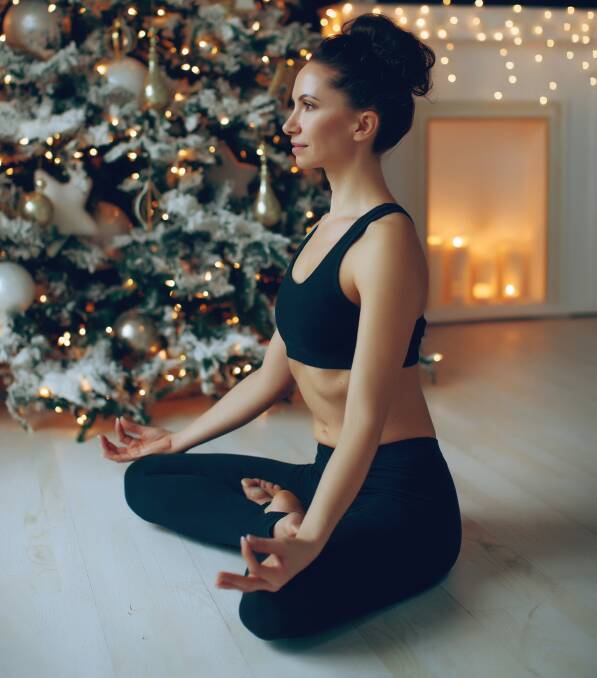The 4-7-8 breathing technique: What it is and how it's done

This is branded content.
I don't think I'm alone in feeling that relaxation is an elusive state of mind. Between work, relationships, social media, the 24-hour news cycle, etc., stress seems like a natural and inevitable aspect of modern life. But it doesn't have to be this way.
There are many natural things you can do to promote inner calm and subsequently improve your emotional, psychological, and physical well-being. Rhythmic breathing is one of those things. Along with lifestyle changes such as exercising more, eating a better diet, and using the internet less frequently, rhythmic breathing is a vital resource in the ongoing battle against stress and anxiety.
Rhythmic breathing is straightforward, effective, and, best of all, free. It requires no equipment, no commercial products, no apps, no comparing courier Mudgee quotes to find the best shipping deal. It also comes in a variety of forms. Today we're focusing our attention on the 4-7-8 breathing technique.
So, what is 4-7-8 breathing, how do you do it, and what are its benefits? That's what we're here to find out.
What is the 4-7-8 breathing technique?
The 4-7-8 is a controlled breathing exercise that was coined by integrative medicine specialist Dr Andrew Weil in 2015. He has written many interesting books that can be purchased online and delivered by a shipping service like TNT Courier. Having said that, the roots of 4-7-8 breathing can be traced back to the ancient yoga practice of pranayama which originated in India.
As its name suggests, 4-7-8 breathing involves breathing in for four seconds, holding the air in your lungs for seven seconds, and then breathing out for eight seconds. This cycle is repeated a number of times.
The 4-7-8 breathing technique is associated with several health benefits. In addition to relieving tension and anxiety, 4-7-8 breathing can, according to anecdotal evidence, make it easier to fall asleep at night.
Let's take a closer look at how to perform this exercise and get the most from it.
How to perform 4-7-8 breathing
4-7-8 breathing is easy to learn and easy to master, but it's important to understand some of its finer points before beginning.
First, select a quiet, well-ventilated spot in your home. Sit down in an upright position with your back straight. Make sure you feel comfortable.
Place the tip of your tongue where your hard palate meets the back of your front teeth. Keep it there for the duration of the exercise. Close your eyes.
Begin by breathing out, deflating your lungs. Now you're ready to start the following cycle:
- Inhale through the nose for four seconds
- Hold the breath in your lungs for seven seconds
- Exhaling slowly and evenly for eight seconds, pushing the air through pursed lips
- Repeat three or more times
If you're not used to doing regulated breathing, you may find it difficult to hold your breath for the prescribed amount of time. No problem. In that case, you can adjust the intervals to make them more manageable. Just make sure you preserve the original ratio. For instance, you can breathe in for two seconds, hold your breath for five seconds, and exhale for six seconds.
Also, be aware that some people experience slight dizziness or lightheadedness after trying 4-7-8 breathing for the first time. This is not a cause for concern and will stop happening as your body adapts to the exercise.
What are the benefits of 4-7-8 breathing?
The whole point of 4-7-8 breathing-and other regulated breathing practices-is to promote tranquility of body and mind. Done properly, 4-7-8 breathing can have a tremendous effect on your physical and psychological well-being.
Specifically, the 4-7-8 breathing technique can deliver the following benefits.
Free your mind
As with meditation, yoga-style breathing is designed to help you free your mind of unnecessary clutter and chatter. It works by giving you something to concentrate on, which has the effect of pushing other matters from your mind. The result is fewer worries and a greater sense of calm.
Improve sleep
Research into the benefits of deep breathing is in the early stages. But there is plenty of anecdotal evidence suggesting that 4-7-8 breathing can help you get to sleep at night. Some people report falling asleep within minutes of doing the exercise. Will it work that way for you? There's only one way to find out.
Decrease blood pressure
Rhythmic breathing slows down your heart rate, which in turn lowers your blood pressure. A recent study which examined the effects of 4-7-8 breathing specifically found that it "significantly decreased" blood pressure.
Relieve anxiety
Anxiety affects everyone to some extent. It can manifest itself in numerous ways, including real physical symptoms, and it can be detrimental to your health-both physical and mental-if left unaddressed for long enough.
We've seen that 4-7-8 breathing reduces your heart rate and blood pressure while simultaneously clearing your mind of unwanted thoughts. That's a recipe for anxiety relief if ever there was one.


